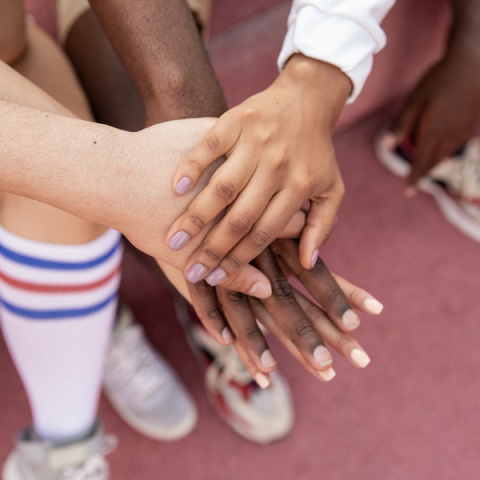The most common skin and nail conditions in BAME skin

By Michaela Shaw
This month, in honour of Black History Month, we will be looking at skin and nail conditions that are most common in the Black, Asian and Minority Ethnic (BAME) community, plus a celebrity case study.
Hyper and hypopigmentation
Hyperpigmentation means that the skin looks darker than normal. This is the more common response after trauma, irritation or inflammation. In contrast, hypopigmentation means that the skin looks lighter than normal. Both are harmless and do not need any treatment. The skin heals and returns to its original colour within six months in most cases, but it can take longer and in some instances remain unchanged.
The change in colour results from a change in the amount of melanin that the body produces when the skin becomes inflamed. As the inflammation clears, the colour change is easier to notice. In some ethnicities, especially those with darker skin, the colour change might be more obvious.
Treating the causes of skin irritation and inflammation will help prevent the pigmentation from returning.
Nail conditions
Melanonychia a brown-black discoloration of the nail. It may present as a longitudinal band, diffused, or more rarely, a horizontal band.
⠀⠀⠀⠀⠀⠀⠀⠀⠀
It affects all ages and is very common in people of colour, especially skin types V and VI.
It is caused by increased melanocyte activation, pregnancy, trauma, nail infections, inflammatory skin conditions such as psoriasis or Vit B12 deficiency, endocrine disorders, SLE, X Ray exposure, medications, or a melanoma to name a few.
If you are suspicious of a skin lesion, use “ABCDE” as a guide to decide if it should be checked by a professional.
A: Asymmetrical
B: Borders uneven
C: Colour uniform
D: Diameter greater than 6mm
E: Evolving
Is the band getting wider? Is the pigment irregular or involving the surrounding skin? Is the nail distorted? Any bumps or lumps, any ulcers, bleeding, thinning, cracking?
If you observe any of these signs, please consult a podiatrist.
⠀⠀⠀⠀⠀⠀⠀⠀⠀⠀⠀⠀
Keloid scarring
Scarring is normal after a skin injury, but in some cases, scar tissue grows excessively, forming harmless, but sometimes uncomfortable, smooth, hard growths called keloids. Prevalent in the BAME community, keloids look like big lumps that can be itchy or tender. Most people are generally aware that they are prone to developing keloids and should weigh the pros and cons when considering invasive treatments. Surgical procedures can also cause keloids to develop but people should never decline any necessary surgical procedures for fear of developing a keloid – Treatment is often very difficult but steroid shots into the keloid itself can help with itching, pain and size reduction.
Bob Marley and melanoma
There is a common misconception that people of colour do not have to be as cautious with skin protection as others. But all skin types, no matter what shade or colour, are at risk for skin cancer and other dermatologic conditions. However, not all skin cancers are caused by UV Rays from the sun.
Melanoma is the third most common but most dangerous type of skin cancer. It is not as prevalent among people of colour, but it’s often diagnosed later at an advanced stage because of where it tends to appear, like in the nails, bottom of feet, between toes and fingers,
At the age of 36 Bob Marley passed away due to a rare type of melanoma under his toenail called Acral Lentiginous Melanoma. This was originally misdiagnosed as a football injury and after a while of no improvement a biopsy was taken which confirmed the problem was actually a melanoma.
Early detection is very important as although deadly, melanoma is treatable.
If you are concerned about any skin or nail issues in your feet, reach out to our podiatrists on 020 8693 6000.



